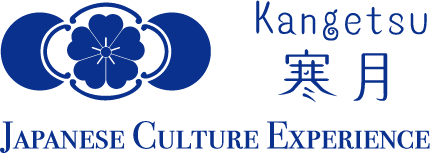About the Name "Kangetsu"
"Kangetsu" (寒月) translates to "the cold winter moon" in English, evoking an image of the moon shining brightly on a clear winter night.
In Japanese culture, the moon seen during the colder months is considered especially beautiful, with a sense of calm and mystery.
The crisp winter air enhances the moon’s gentle glow, symbolizing tranquility and stillness.
The word also carries poetic undertones, reminding people of Japan’s deep appreciation for seasonal beauty and natural landscapes.
"Kangetsu" invites viewers to experience a serene moment and reflect on the peaceful power of nature and the quiet elegance of the changing seasons.
This name was chosen as a fitting symbol for the space where we offer traditional cultural experiences in Kyoto’s Ninenzaka district.
Furthermore, "Kangetsu" is named in honor of my great-grandfather, Awashima Kangetsu.
He was an author and painter active during the Meiji period, with a deep reverence for the beauty and traditional culture of the Edo period.
He collected numerous art pieces, many of which were unfortunately lost during the Great Kanto Earthquake.
However, his legacy and spirit live on in Japanese culture.
In our classroom, we value the preservation of Japanese beauty that my great-grandfather cherished, bringing it to a modern audience.
Under the name "Kangetsu," we invite everyone to experience the profound depth of Japanese artistry, elegance, and the quiet beauty of Japanese culture.
Awashima Kangetsu (淡島 寒月)
Awashima Kangetsu was born on October 23, 1859 (Ansei 6) in Bakurocho, Nihonbashi, Tokyo, and passed away on February 23, 1926 (Taisho 15).
He was a Japanese literary figure, haiku poet, and painter who also made a name as a novelist and essayist.
His given name was Hojuuro, and he had several pseudonyms, including Aikakuken and Bon’un’an.
In his youth, he was influenced by Yukichi Fukuzawa and admired Western culture, even considering American citizenship.
However, around the 13th and 14th years of the Meiji period, he became captivated by Edo culture, especially the works of Saikaku Ihara.
This led him to contribute to the revival of Genroku literature in the Meiji era, especially the style of Saikaku, making a significant impact on the literary world.
Later, his journey led him to study Zen, archaeology, Christianity, evolution theory, and socialism, eventually developing an avid interest in toy collecting in his later years.
His notable works include *Hyakubibun*, *Bon’un’an Zatsuwa*, the novels *Hyakubijin* and *Makamono Monogatari*, and, posthumously, collections like *Kangetsu Kuushu* and *Kangetsu Ikou Rengushu*.
His haiku collection includes works such as "Ujibashi ya zenifukiro no haru no kaze" (“Uji Bridge, spring winds in the coins-and-road”).
Kangetsu dedicated his life to the study and introduction of Edo literature, leaving an important mark on Meiji literature.








